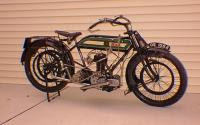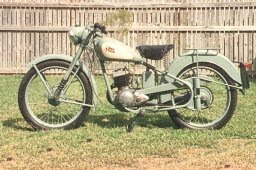MUNAS KE-4 IKATAN VESPA INDONESIA
Di agendakan pada hari Sabtu, 3 Juli 2010 di Jakarta
Senin, 01 Maret 2010
NEWS
JAMBORE NASIONAL VESPA KE-5 ( SPIRIT OF VESPA)
Sabtu-Minggu, 10-11 April 2010
di : Stadion Yosonegoro - Magetan - Jawa Timur
NEWS
NUSAKAMBANGAN SCOOTER CLUB akan menyelenggarakan
JAMBORE VESPA NUSANTARA 2010
Tempat : Pantai Teluk Penyu - Cilacap
Tanggal : 3 & 4 April 2010
Hari : Sabtu & Minggu
Mohon kehadiran dan partisipasi kepada semua Club Vespa di Indonesia
NEWS
BOSC (Bekasi Otomotif Scooter Club)
akan menyelenggarakan
Gelegar VESPAMANIA 3
Tempat : Lapangan Kecamatan Bekasi Utara
Tanggal : 13-14 Maret 2010
Hari : Sabtu & Minggu
Jumat, 26 Februari 2010

http://www.classic-motorcycle.org present the 1 classic jumble, on 3-4 April 2010
place in VILLA MANDIRI gadog PUNCAK Bogor
Jumat, 15 Januari 2010
BSA History

BSA was for many years was the largest British motorcycle manufacturer.
In the 1850's a group of gunsmiths came together to form a Trade Association and in 1861 they founded the BSA Company (Birmingham Small Arms). This is the reason that the BSA Logo is a stack of rifles known as the Piled Arms. As rifles tend to drop off in demand when there is no war, they decided to start making bicycles in 1880.
They first built a motorcycle using a Belgium Minerva engine hung from the down tube of a pedal cycle. It was in 1910 that they produced their first complete machine which was a well designed and produced piece of equipment at the right price. This was a 499cc 3 1/2hp which had an upright cylinder and was belt driven to the rear wheel. The first world war came along and the army wanted not only rifles, but also reliable motorcycles. After the war production was focused and development started bringing out new models. With the extended British Empire the need for motorcycles in the colonial countries increased the sales of the products. During the depression years the range was reduced and in 1932 the Blue Star 499cc OHV single was released and this was revised over the next few years with specialist modifications and enlarged capacity to 596cc. In 1937 Val Page designed the M23 Empire Star in both 350cc and 500cc engines which proved very popular but when the second world war broke out again production was again focused on ordinance and the main stay of the British Army became the BSA M20 with a side valve engine of 500cc. After the war a new range was announced and development continued in the future years with the release of telescopic front forks being fitted in 1946 B31 350cc, which was a foretaste of the things to come.
1947 saw the introduction of the Bantam which was a small capacity 2 stroke machine, initially a 125cc but eventually developing into a 175cc capacity, which was a copy of the pre-war DKW RT125 whose plans were acquired as the victors spoils. In 1937 Walter Handley earned a Brooklands Gold Star for lapping the circuit at over 100mph (161kph) on a 500cc Empire Star, this was to lead to the development and production in 1949 of the 350cc and 500cc Gold Star which when it went into production was an instant success with anyone who wanted a race thoroughbred machine and this continued until 1963. BSA also produced parallel twins from these years, the first being the A7 with 500cc and the A10 which replaced it. The 250cc had entered the range in between wars and in 1959 the C15 became the first four stroke model to become unit construction, where the engine and gearbox were made in one unit.

Because of the introduction of driving tests and the restriction of learners to 250cc, these were a success with young people until the acquired their licence. The bikes produced by BSA in the 1960s and the 1970s marked the end of an era, for these were not only the final years of the BSA concern but also the dying years of the once-great British motorcycle industry. BSA entered the 1960s boasting record profits and a formidable reputation, but this all came to an end because of lack of investment in new plant and a short sighted view that the British industry was invincible. This is the era that I remember as a young man starting out as an apprentice and ending as a married man, an era when the Japanese steadily introduced competion that would cause the collapse of the British industry. The Bantam name still meant something to those embarking on a motorcycling career or in the market for a small single, and BSA's entry-level model carried on until 1968 when the final 175cc model was made. In 1971 the Gold Star name was used again on the 500cc single which ran for 2 years until the BSA range was cut altogether due to massive losses.
The company was absorbed into the Government-funded national motorcycle combine under Dennis Poore of Norton Villiers, and the BSA name disappeared very quickly after that. It was a sad end to a great company, but the BSA legacy is still alive in the classic motor cycle world, where examples of these great British singles continue to give pleasure to bike enthusiasts today. But this is not the end of the story, because in 1999 a new Goldstar replica arrived on the scene. Produced in Southampton, England, it was built much along the old lines but withe the power unit supplied by no less than the mighty Yamaha from Japan. A single cylinder 500cc engine with CDI ignition and all the retro styling that makes this a worthy reliable replica of what was the Best of British motorcycle manufacturing.

Harley Davidson Touring Series

The touring family, also known as "dressers", includes three Road King models and Electra Glide models offered in various trim. The Road Kings have a "retro cruiser" appearance and are equipped with a large clear windshield. Road Kings are reminiscent of big-twin models from the 1940s and '50s. Electra Glides can be identified by their full front fairings. Most Electra Glides sport a fork-mounted fairing referred to as the "Batwing" due to its unmistakable shape. The Road Glide has a frame-mounted fairing, referred to as the "Sharknose". The Sharknose includes a unique, dual front headlight.
Touring models are distinguishable by their large saddlebags, rear coil-over air suspension and are the only models to offer full fairings with Radios/CBs. All touring models use the same frame, first introduced with a Shovelhead motor in 1980, and carried forward with only modest upgrades until 2009, when it was extensively redesigned. The frame is distinguished by the location of the steering head in front of the forks and was the first H-D frame to rubber mount the drivetrain to isolate the rider from the vibration of the big V-twin.
The frame was modified for the 1994 model year when the oil tank went under the transmission and the battery was moved inboard from under the right saddlebag to under the seat. In 1997, the frame was again modified to allow for a larger battery under the seat and to lower seat height. In 2007, Harley introduced the 96 cubic inch motor, as well the 6 speed transmission to give the rider better speeds on the highway.
In years past, these touring models have become favorites with several local and state police agencies, such as the Chicago Police Department, the Los Angeles Police Department, the Iowa State Patrol, and several others.
In 2006, Harley introduced the FLHX, a bike designed by Willie G. Davidson to be his personal ride, to its touring line.[80]
In 2008, Harley added anti-lock braking systems and cruise control as a factory installed option on all touring models.[81] Also new for 2008 is the 6-gallon fuel tank for all touring models.
For the 2009 model year, Harley-Davidson has redesigned the entire touring range with several changes, including a new frame, new swingarm, a completely revised engine-mounting system, 17-inch (430 mm) front wheels for all but the FLHRC, and a 2-1-2 exhaust. The changes result in greater load carrying capacity, better handling, a smoother engine, longer range and less exhaust heat transmitted to the rider and passenger.[82][83] Also released for the 2009 model year is the FLHTCUTG Tri-Glide Ultra Classic, the first three-wheeled Harley since the Servi-Car was discontinued in 1973. The model features a unique frame and a 103 ci engine exclusive to the trike.

